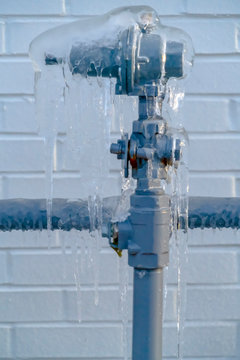The article listed below pertaining to How to prepare your home plumbing for winter weather is truly insightful. You should see for yourself.

Cold weather can damage your plumbing, particularly by freezing pipes. Right here's how to prevent it from taking place and what to do if it does.
Introduction
As temperatures drop, the danger of frozen pipelines boosts, potentially resulting in costly repairs and water damage. Understanding how to prevent icy pipes is vital for house owners in cold environments.
Avoidance Tips
Insulating vulnerable pipelines
Cover pipelines in insulation sleeves or utilize warm tape to secure them from freezing temperature levels. Focus on pipelines in unheated or external locations of the home.
Home heating strategies
Maintain indoor rooms sufficiently heated up, especially locations with plumbing. Open closet doors to permit warm air to flow around pipelines under sinks.
Exactly how to determine icy pipes
Look for reduced water flow from taps, uncommon odors or noises from pipelines, and visible frost on subjected pipelines.
Long-Term Solutions
Structural adjustments
Think about rerouting pipelines away from exterior wall surfaces or unheated areas. Add added insulation to attic rooms, basements, and crawl spaces.
Upgrading insulation
Invest in top quality insulation for pipes, attic rooms, and walls. Appropriate insulation assists keep consistent temperature levels and decreases the threat of icy pipes.
Securing Outside Pipes
Yard hose pipes and outdoor taps
Separate and drain garden hose pipes prior to wintertime. Install frost-proof spigots or cover exterior faucets with insulated caps.
Understanding Icy Pipelines
What triggers pipes to freeze?
Pipes ice up when subjected to temperatures listed below 32 ° F (0 ° C) for expanded durations. As water inside the pipes ices up, it expands, taxing the pipeline walls and potentially triggering them to break.
Dangers and problems
Icy pipes can result in water system disruptions, home damage, and costly repair work. Burst pipelines can flood homes and create substantial architectural damages.
Signs of Frozen Pipeline
Recognizing icy pipelines early can avoid them from breaking.
What to Do If Your Pipelines Freeze
Immediate activities to take
If you believe frozen pipelines, keep taps available to eliminate pressure as the ice thaws. Make use of a hairdryer or towels taken in warm water to thaw pipes gradually.
Verdict
Protecting against frozen pipelines needs proactive actions and quick responses. By comprehending the causes, indications, and preventive measures, homeowners can safeguard their plumbing throughout winter.
5 Ways to Prevent Frozen Pipes
Drain Outdoor Faucets and Disconnect Hoses
First, close the shut-off valve that controls the flow of water in the pipe to your outdoor faucet. Then, head outside to disconnect and drain your hose and open the outdoor faucet to allow the water to completely drain out of the line. Turn off the faucet when done. Finally, head back to the shut-off valve and drain the remaining water inside the pipe into a bucket or container. Additionally, if you have a home irrigation system, you should consider hiring an expert to clear the system of water each year.
Insulate Pipes
One of the best and most cost-effective methods for preventing frozen water pipes is to wrap your pipes with insulation. This is especially important for areas in your home that aren’t exposed to heat, such as an attic. We suggest using foam sleeves, which can typically be found at your local hardware store.
Keep Heat Running at 65
Your pipes are located inside your walls, and the temperature there is much colder than the rest of the house. To prevent your pipes from freezing, The Insurance Information Institute suggests that you keep your home heated to at least 65 degrees, even when traveling. You may want to invest in smart devices that can keep an eye on the temperature in your home while you’re away.
Leave Water Dripping
Moving water — even a small trickle — can prevent ice from forming inside your pipes. When freezing temps are imminent, start a drip of water from all faucets that serve exposed pipes. Leaving a few faucets running will also help relieve pressure inside the pipes and help prevent a rupture if the water inside freezes.
Open Cupboard Doors
Warm your kitchen and bathroom pipes by opening cupboards and vanities. You should also leave your interior doors ajar to help warm air circulate evenly throughout your home.

We are very eager about How to prepare your home plumbing for winter weather and I hope you liked the new entry. Sharing is good. You just don't know, you will be helping someone out. We thank you for your readership.
Prices & Booking